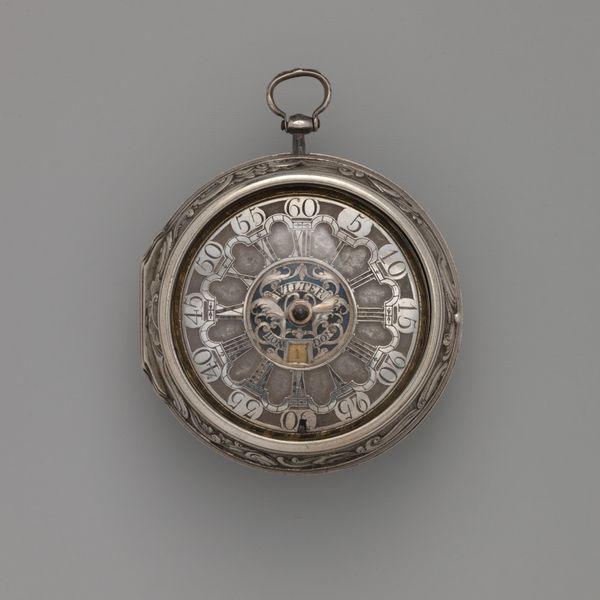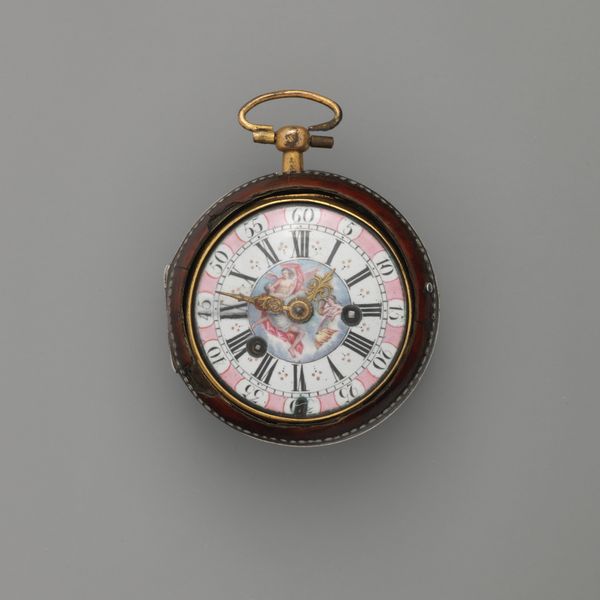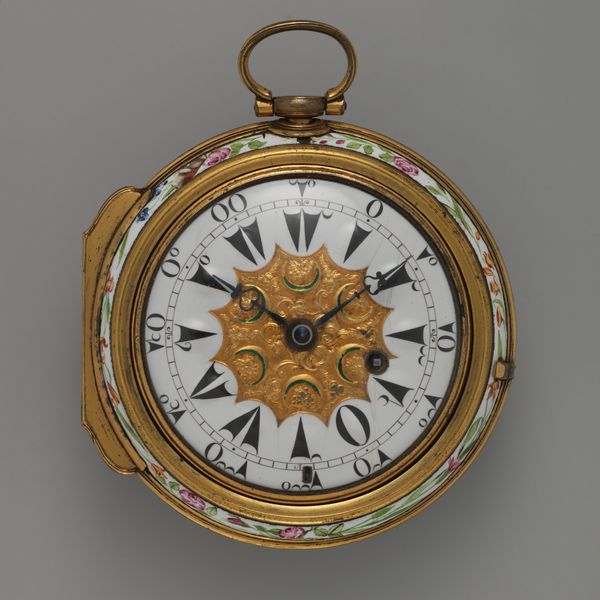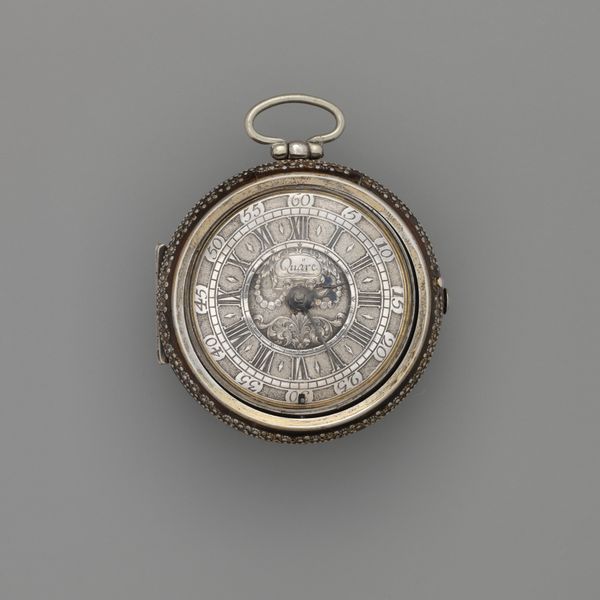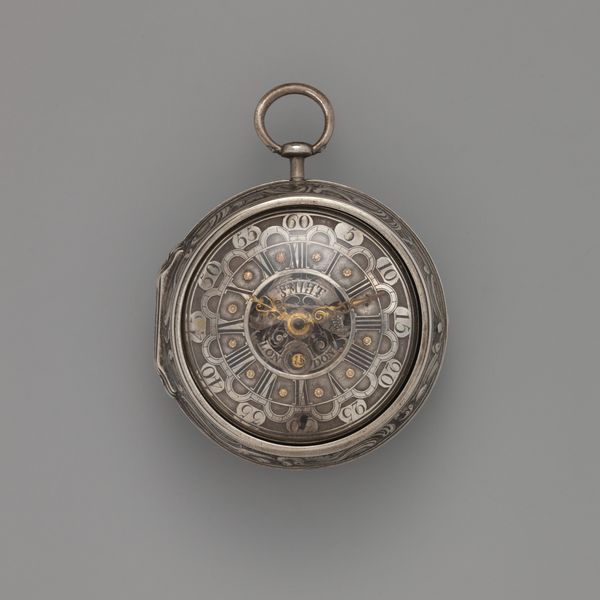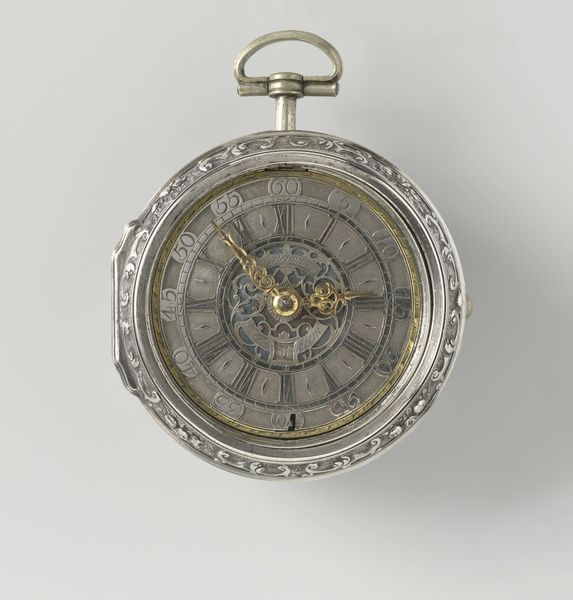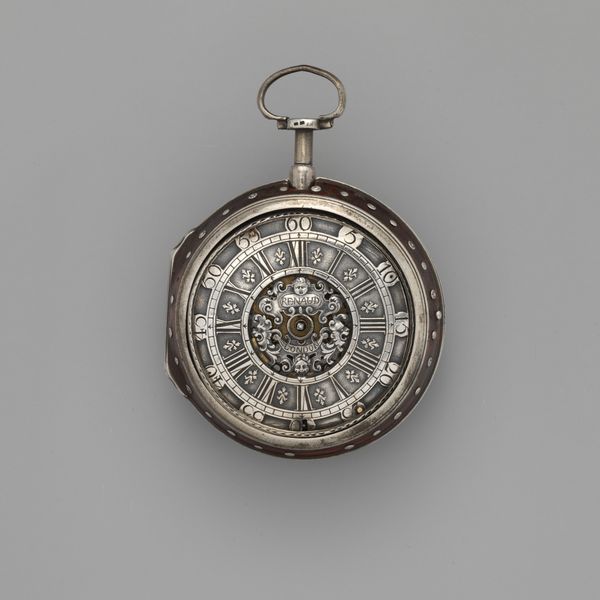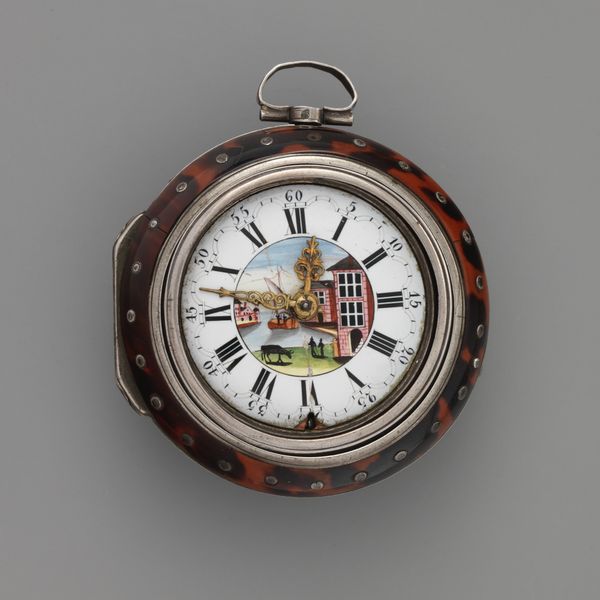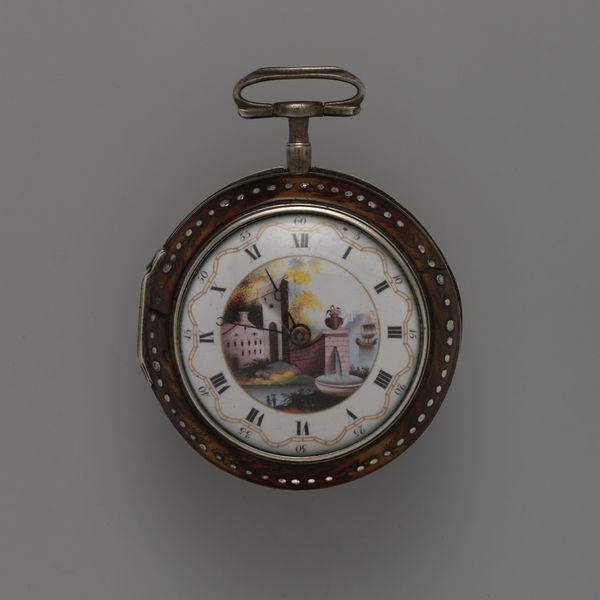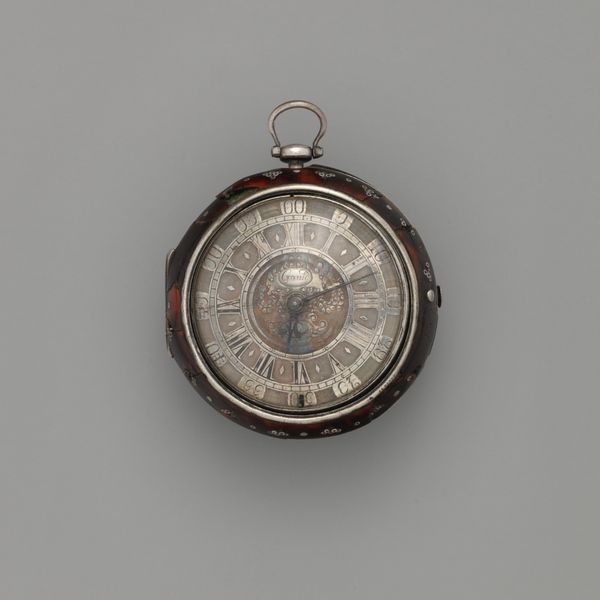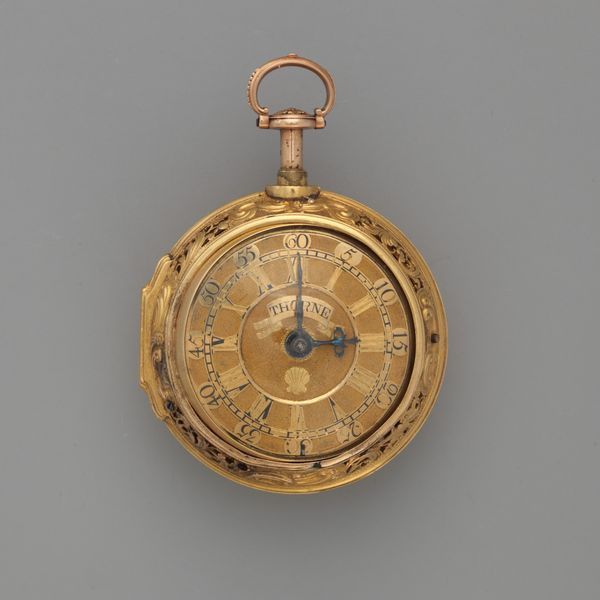
mixed-media, silver, metal, gold, sculpture
#
mixed-media
#
silver
#
baroque
#
metal
#
gold
#
sculpture
#
decorative-art
#
miniature
Dimensions: Diameter (case): 1 7/8 in. (4.8 cm)
Copyright: Public Domain
Editor: We’re looking at a “Watch,” made between 1730 and 1765, location at the Metropolitan Museum of Art. The metadata describes it as mixed media, incorporating silver, gold, and other metals, and is described as baroque, a work of decorative art, even miniature. I immediately notice the ornate details of the timepiece – the use of gold and bright turquoise along the circumference and Roman numerals. How do you see this piece, especially in terms of its composition? Curator: Its circular form, defined by that turquoise-colored perimeter, serves as the primary structure. Note the interior face; a contrasting plane featuring Roman numerals intersected by black hash marks that segment time, quite literally framing an even smaller circular heraldic image. This segmentation divides the surface of the work. This structure creates a hierarchical relationship within the overall design; how the interplay of positive and negative space gives each component equal importance, further influencing visual perception. What do you make of that gilded, c-shaped adornment crowning the watch’s circumference? Editor: The gold hook adds a practical, albeit decorative, element. Its placement at the apex of the circle draws the eye upward, creating a sense of completion, echoing the outer structure of the design and highlighting symmetry and functionality. Does the presence of the crest also serve a similar structural role? Curator: Absolutely. The crest, positioned at the dial’s center, punctuates the visual field, commanding attention and balancing the overall composition. Look closer: it integrates both symmetry and asymmetry within that inner heraldic space. Do you agree the miniature sculpture transforms from a tool into more of an objet d’art, transcending practical function? Editor: Definitely, that ornamentation suggests that its beauty and display are as vital as its function. Curator: Precisely. Thinking structurally about the composition makes one realize it's less about time and more about aesthetic statement, something almost akin to wearing a miniature painting on one's person. Editor: So analyzing form and structure truly reveals how we interpret and appreciate decorative pieces like this. Thank you.
Comments
No comments
Be the first to comment and join the conversation on the ultimate creative platform.
